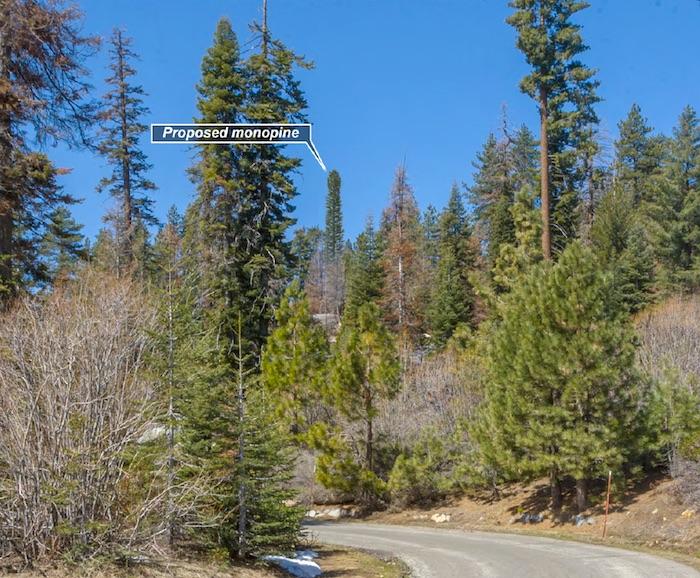
Verizon Wireless plans to disguise a cellphone tower as a pine tree at Sequoia National Park. The perspective of this shot makes it difficult to determine how high above the rest of the forest the tower would rise/NPS, Verizon Wireless file
Better cell service -- and a scraggly looking pine tree -- are coming to Sequoia National Park in California.
In February the Pacific West Region director, Stan Austin, signed off on the plan to erect the 138-foot cellular tower west of Wuksachi Village.
The ubiquitous nature of cellphones these days brings more and more demands for cell signals wherever one roams, even if they might be in a forest of giant sequoias. Currently, Sequoia has pretty limited cell coverage.
The wireless telecommunications facility would provide year-round cellular coverage in the vicinity of Wuksachi Village and surrounding areas, including Wuksachi Way and portions of the Generals Highway, according to the Park Service.
The Park Service held several meetings and field trips with Verizon, starting in 2015, to identify potential tower locations and evaluate the feasibility of the facility installation. Following these meetings, Verizon Wireless submitted an application to Sequoia National Park on March 2, 2017, to install a wireless telecommunications facility near Wuksachi Village.
The EA analyzed a no action alternative and an alternative to install a wireless communications facility. During initial site visits, alternative locations for the antenna were assessed, including use of the Wuksachi Village main lodge building for mounting the antenna, and potential tower locations in the Lodgepole and Wolverton areas. All alternative locations evaluated were dismissed due to the site topography (i.e., site located in canyon area) and limited height of the building, which would not allow for adequate coverage, and/or lack of available electrical power. Alternative tower styles were also considered, including a lattice tower and a monopole.
The EA was available for a 32-day public review and comment period from October 24, 2018, through November 26, 2018. A total of 42 comments were received during public review of the EA. Seventeen of those expressed concerns that widespread cellphone coverage "reduces the contrast between wilderness and other lands, and negatively impacts wilderness character."
Sequoia National Park's position is that improved cellular service will provide opportunities to more easily and quickly communicate park conditions to visitors, including realtime information on parking, traffic, weather, and hazardous conditions. Cellular service will also assist the park in providing educational and interpretive materials to park visitors, information about events and activities, maps, and other services, which could enhance the visitor experience and help protect park resources.
Sequoia and Kings Canyon national parks are currently working with the permittee to design the tower. Construction will likely begin in 2020.



Add comment